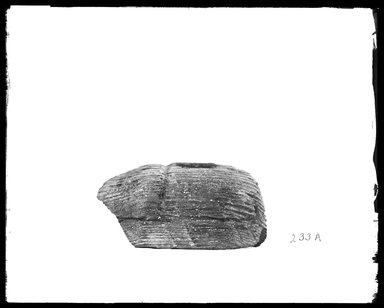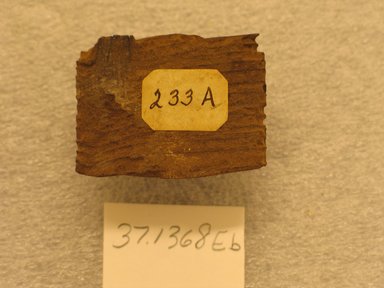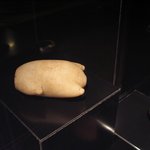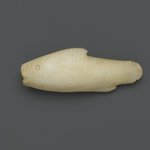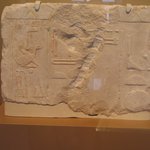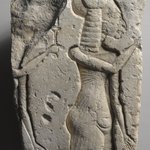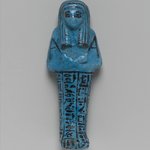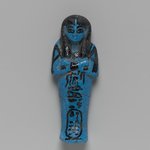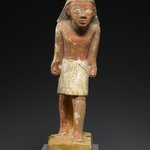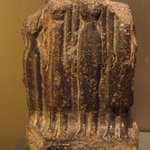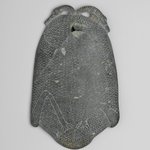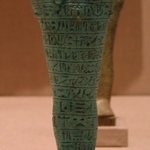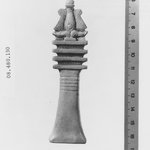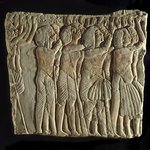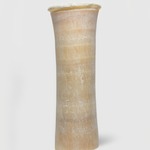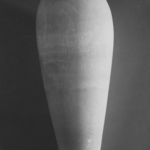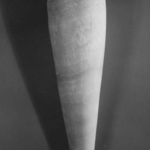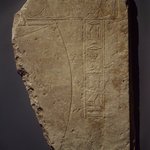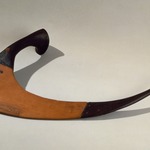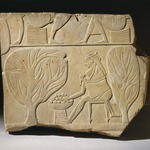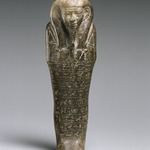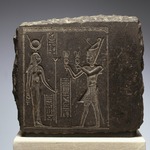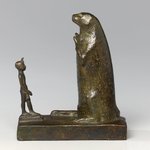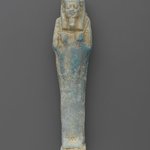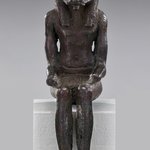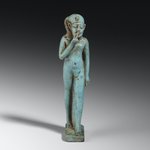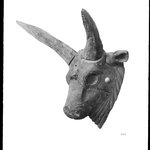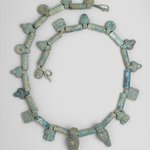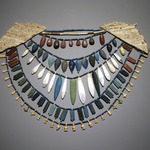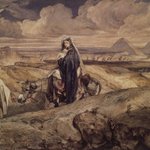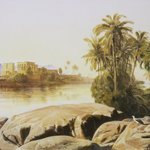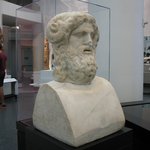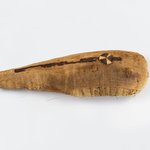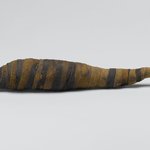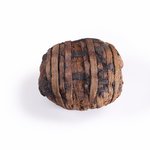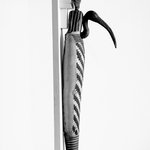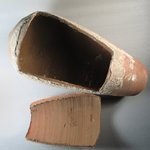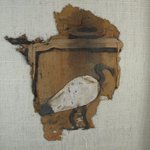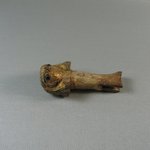Scarab Coffin
Egyptian, Classical, Ancient Near Eastern Art
The scarab beetle lays its eggs in small balls of dung, which it sometimes moves into position with its forelegs. This action led to associating the scarab with the force that rolls the sun across the heavens. Because the word for scarab beetle in the Egyptian language contains the same consonants as the word for “to come into being,” the ancient Egyptians especially associated the scarab with the sun, when it newly comes into being every morning. Scarabs could therefore be mummified to make requests to the sun god.
MEDIUM
Wood, animal remains
DATES
664–332 B.C.E.
DYNASTY
Dynasty 26 to Dynasty 30
PERIOD
Late Period
DIMENSIONS
Coffin with Lid: 1 7/16 × 1 15/16 × 3 1/8 in. (3.6 × 5 × 8 cm)
(show scale)
ACCESSION NUMBER
37.1368Ea-c
CREDIT LINE
Charles Edwin Wilbour Fund
CATALOGUE DESCRIPTION
The object is a small, simply carved, wooden coffin in the shape of a scarab. The object consists of three parts: the coffin body (a), coffin lid (b), and scarab animal remains (c). The scarab remains have been removed.
The coffin consists of two parts the main, upper body, and a small, square lid on the bottom. The body is carved from a single piece of wood and has prominent, raised wood grain. A small rectangular cavity has been carved in the underside of the body where the animal remains would be placed. The coffin lid is a small flat rectangle which is pressure fit into the cavity in the body. Condition: The coffin is overall in fair, stable condition.
MUSEUM LOCATION
This item is not on view
CAPTION
Scarab Coffin, 664–332 B.C.E. Wood, animal remains, Coffin with Lid: 1 7/16 × 1 15/16 × 3 1/8 in. (3.6 × 5 × 8 cm). Brooklyn Museum, Charles Edwin Wilbour Fund, 37.1368Ea-c. Creative Commons-BY (Photo: Brooklyn Museum, 37.1368Ea-c_NegA_SL4.jpg)
IMAGE
overall, unedited master file, 37.1368Ea-c_NegA_SL4.jpg. Brooklyn Museum photograph
"CUR" at the beginning of an image file name means that the image was created by a curatorial staff member. These study images may be digital point-and-shoot photographs, when we don\'t yet have high-quality studio photography, or they may be scans of older negatives, slides, or photographic prints, providing historical documentation of the object.
RIGHTS STATEMENT
Creative Commons-BY
You may download and use Brooklyn Museum images of this three-dimensional work in accordance with a
Creative Commons license. Fair use, as understood under the United States Copyright Act, may also apply.
Please include caption information from this page and credit the Brooklyn Museum. If you need a high resolution file, please fill out our online
application form (charges apply).
For further information about copyright, we recommend resources at the
United States Library of Congress,
Cornell University,
Copyright and Cultural Institutions: Guidelines for U.S. Libraries, Archives, and Museums, and
Copyright Watch.
For more information about the Museum's rights project, including how rights types are assigned, please see our
blog posts on copyright.
If you have any information regarding this work and rights to it, please contact
copyright@brooklynmuseum.org.
RECORD COMPLETENESS
Not every record you will find here is complete. More information is available for some works than for others, and some entries have been updated more recently. Records are frequently reviewed and revised, and
we welcome any additional information you might have.
Tell me more about Scarabs.

These scarabs represented the cycle of the sun and rebirth to the ancient Egyptians. Scarabs, also called dung beetles, create balls of dung, which were viewed as symbols of death and decay. They then rolled the balls of dung which, to the ancient Egyptians, mirrored the way the sun moving across the sky!
The wooden scarab here is actually a scarab coffin, as scarabs could be mummified to communicate with sun gods. The stone scarab is a heart scarab, an amulet that was buried with a mummy.
